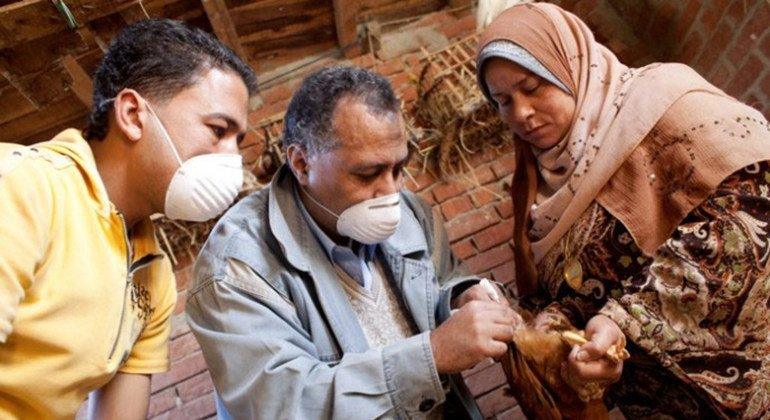WHO spokesperson Dr. Margaret Harris told reporters in Geneva that the H5N1 virus that causes the disease is “not circulating in humans but jumping to humans” who are exposed to poultry or dairy cattle. “We are not seeing sustained circulation,” he insisted..
Underlying conditions
The man who died from the disease in Louisiana was over 65 years old and reportedly had underlying medical conditions, Dr. Harris said.
According to health authorities, he had been exposed to chickens and wild birds. Several dozen people in the United States have contracted avian influenza – commonly known as bird flu – during the current outbreak, primarily agricultural workers in close contact with poultry and cattle herds.
Dr. Harris highlighted that the WHO’s assessment of the risk for the general population “is still low and remains stable.” The main concern is for people who work in animal industries because they need to be better protected from infections.
The WHO spokesperson added that the United States continued to carry out “a lot of surveillance” of the human and animal population, “of the methods that we use for agriculture, for our food production… all of those things have to be combined because, in In fact, it always poses a risk.”
The Chinese respiratory virus is No new
Meanwhile, a respiratory virus gaining ground in China, known as human metapneumovirus, or hMPV, has been attracting media attention in recent weeks, but does not pose a new or major threat, Dr. Harris insisted.
The spokesperson for the UN health agency stated that these types of infections are increasing in China “as expected during the winter,” with seasonal flu “by far the most common among them,” according to the Chinese Center for Health. Disease Control and Prevention.
“Reported levels of respiratory infections in China are within the usual range for the winter season,” Dr. Harris explained. “Authorities report that hospital utilization is currently lower than this time last year, and no emergency declarations have been activated nor responses have been activated”he added.
As for hMPV, it was first identified in 2001 and “has been in the human population for a long time”Dr. Harris clarified.
“Very, very low” risk
He added that it is a common virus that circulates in winter and spring and that usually “causes respiratory symptoms similar to the common cold.”
Like any of the hundreds of common cold viruses known to exist, it can cause more severe illness in patients with low immunity, particularly, but not limited to, newborns and the elderly.
When asked about the mortality rate of hMPV, Dr. Harris described it as “very, very low.” It is not a pathogen that normally causes death in humans, except in the most vulnerable, he concluded, recommending “simple” prevention measures, such as the use of a mask, improving ventilation of closed spaces and hand washing.




